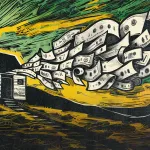THE IMAGINARIUM
On bandages and hope: Peter Mammes interrogates his mind
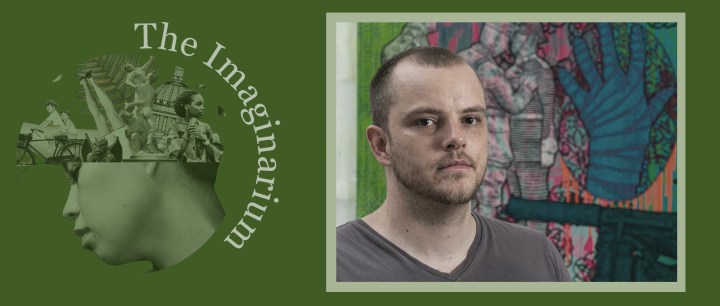
In this series, we talk to artists, creatives, designers and musicians about their work, their inspiration and the challenges they face in today’s different reality.
Peter Mammes, like many people around the world struggling to get a sense of normalcy – a concept that seems to be wavering like a dysfunctional pendulum, has been thinking a lot lately: about his work, the sudden halt that changed the order of things, who he misses – especially “his people”, who are all back in Johannesburg – and about Covid-19, this invisible virus that travelled the globe at a frightening speed. Covid-19 that left him bedridden for two weeks during February 2020.
“I got angry at the way this pandemic had affected me personally. It is strange how an illness can originate somewhere out there halfway around the world and you get it; the world is so connected, but at the same time we live on this little fragile planet out in the infinite universe,” he says.
The 34-year old Krugersdorp-born London-based fine artist – he came to London in 2018, on an Exceptional Talent Visa – is an autodidact, who first worked as an apprentice in a puppet theatre and globe-trotted from Cairo to Moscow and then Varanasi in India to find inspiration, patterns, research subjects and to go deeper into the history of societies.
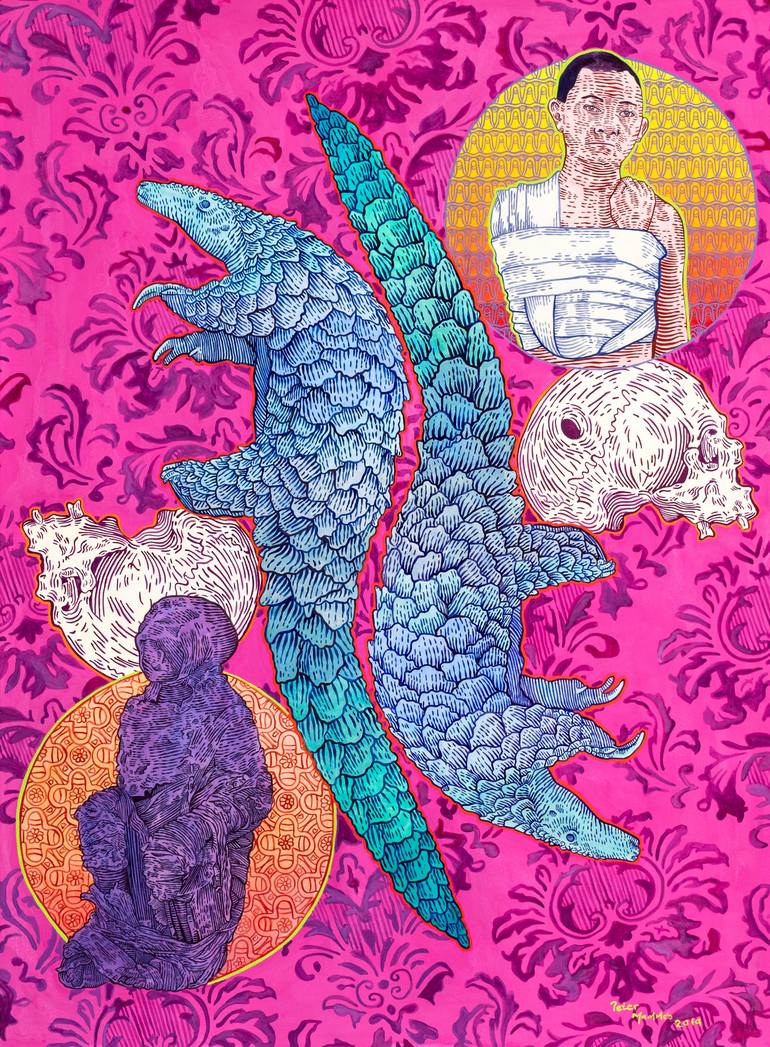
Peter Mammes, ‘Relics of a forgotten time’. 22 W x 29.9 H x 1.2 in gouache (Image Saatchi Art)
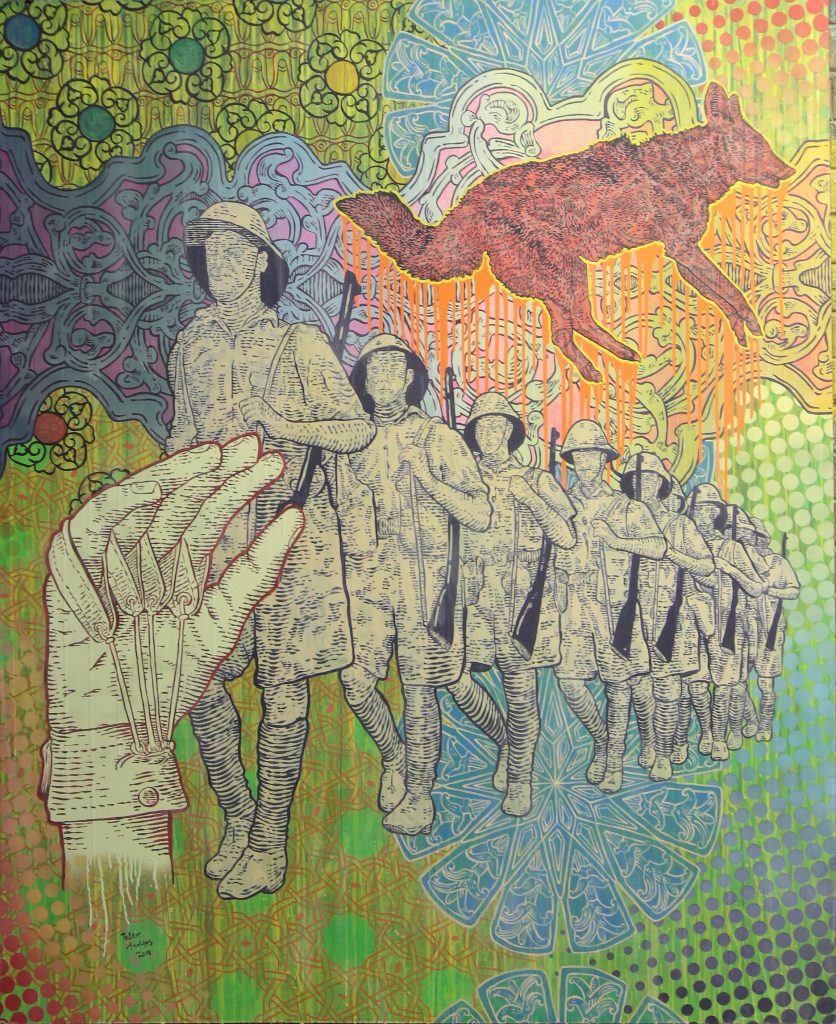
Peter Mammes, ‘When the troops arrive it’s too late’ 184cm by 150cm acrylic paint on board 2018-836×1024
His artworks, in both colour, and black and white, are incisive, precise and delicate; they seem to pierce through life, cutting off moments with the precision of a scalpel. The attention to detail is impressive, the need to capture both life’s tension and splendour, a meticulous labour. And the result is drawings designed like an explosion of emotions and elements. They also seem to pass on a message – a prediction of sorts. And in some ways, Mammes’s work is reminiscent of the Tarot cards fortune tellers would pull to tell one’s future: nothing is incidental, nothing happens by chance. The layers, the symmetry in the subjects drawn, the fine lines, shades of paint and refined patterns come together to tell us what once was and what’s to come.
“I use drawing to process and interrogate my mind and pose questions about my assumptions and beliefs,” he explains.
Mammes was supposed to take part in “a few group shows, an art fair as well as an art residency in Turkey which was all put on hold”. Everything is now on hold, something, he feels, is a big drawback as if somehow, the pandemic had cut the wind in his wings.
“It seems to me that because of the pandemic, people are questioning authority, be that the government or ‘experts’. There have been so many lies and misinformation and chaos during this time that the idea of fake news is losing its punch, I think this is where my work can talk to this feeling. My personal journey of disillusionment is something that might resonate with the current situation.”
For “The Imaginarium”, Mammes selected artworks that, although drawing from another time in history, have similarities with our current experience.
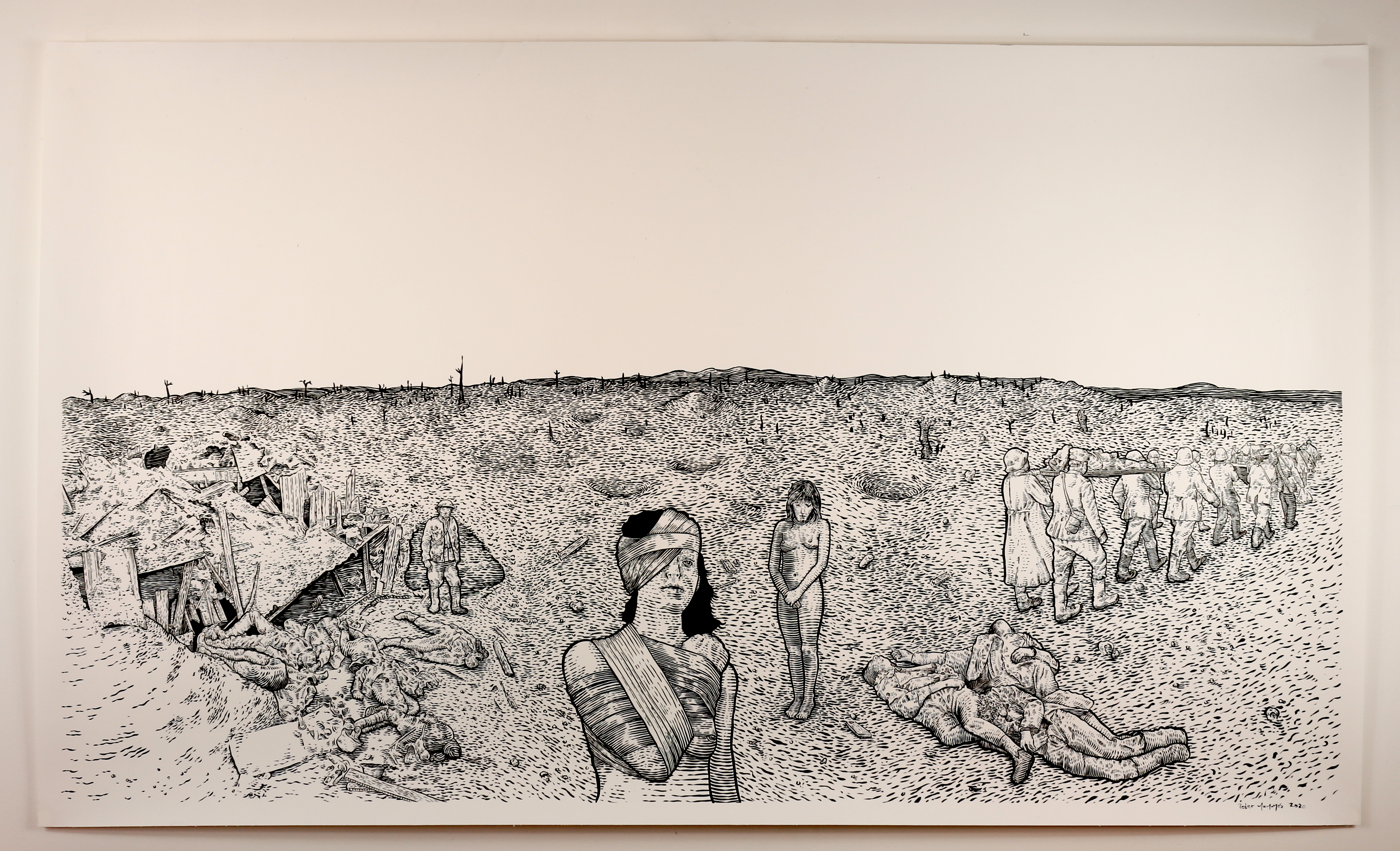
Peter Mammes, ‘Aftermath’; ink on paper 145cm by 85cm, 2020
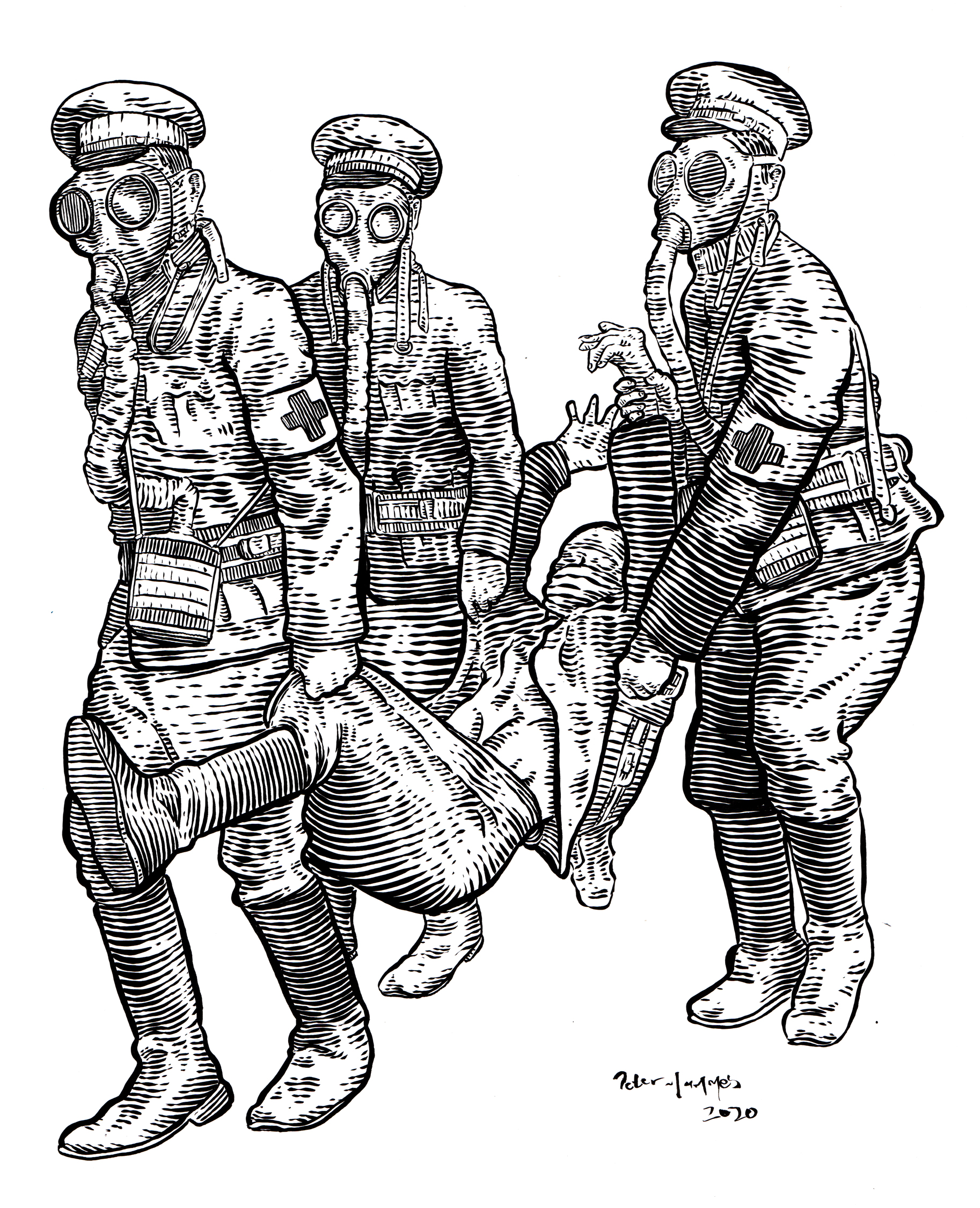
Peter Mammes, ‘Aftermath’, ink on paper, 145cm by 85cm, 2020
“I used World War I scenes of destruction and battlefields, a bomb-scape and retreating soldiers to present a feeling of desolation. The artwork is called Aftermath. It is the biggest drawing I have made and the first time [I use] a landscape in a drawing. I think that the pandemic has made people more receptive and interested in darker or more complex themes and provides a new vantage point to look at other historical events, whether that be World Wars, the Spanish flu or otherwise. I have had a lot of positive responses to new works with medical imagery, which I have traditionally used a lot in my work.”
The artist, who is now also creating sculptural artworks, created a piece called Hope, made from parts of cold cast metals and resin. The sculpture shows a boy with his head and hand bandaged.
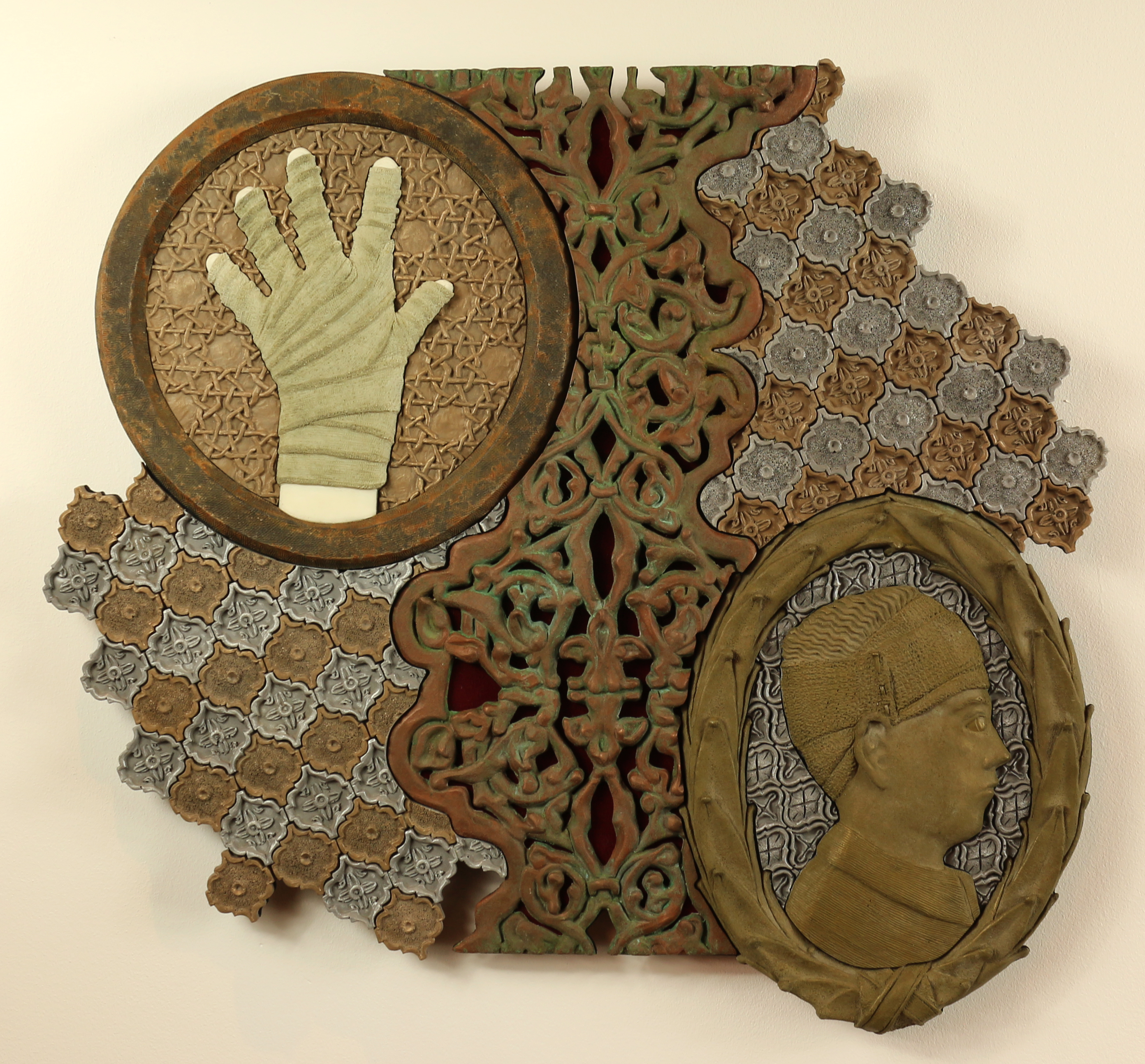
Peter Mammes, ‘Hope’ cold cast metals, resin, velvet and wood, 45cm by 50cm
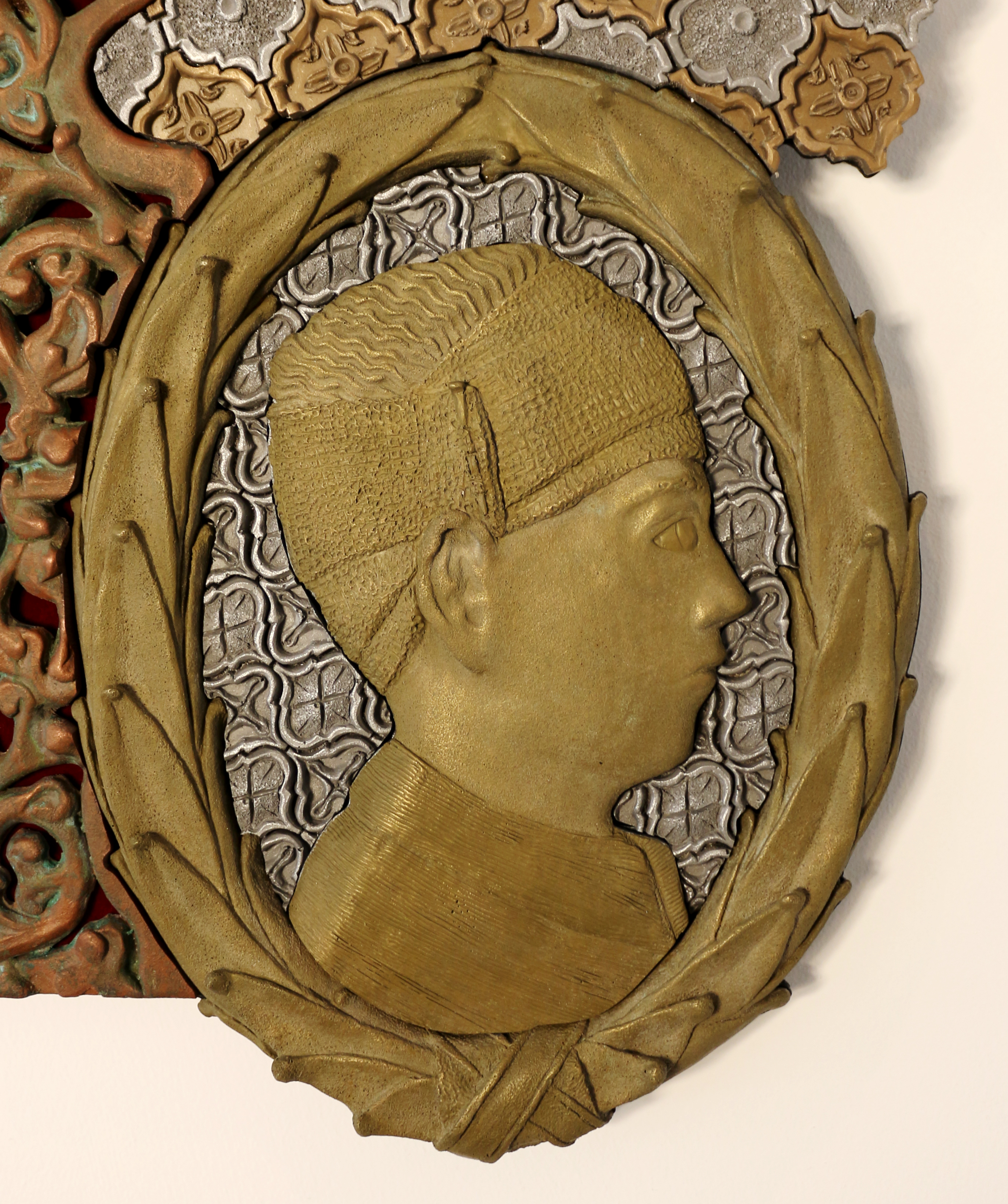
Peter Mammes, ‘Hope’ cold cast metals, resin, velvet and wood
“Bandages are an embodiment of something being fixed or hidden. That is a metaphor for human attempts to remedy and fix things that are wrong in society, but also hints at something being wrong and covered up. A bandage is also something that an authority has applied and there are specific ways to apply bandages. The bandaged hand is a symbol of hope and healing,” Mammes says.
And for the time being, he is trying to escape from politics and the relentless noise of news to explore a subject that fascinated him as a child: astronomy. “Thinking about the world through the prism of astronomy gives an entirely different perspective and an inner peace.” DM/ML
If you would like to share your ideas or suggestions with us, please leave a comment below or email us at [email protected] and [email protected].
Sign up for our newsletter to get the best of Maverick Life delivered to your inbox every Sunday morning.






